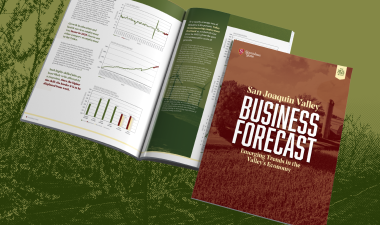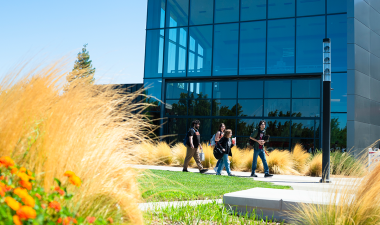The Central Valley economy faces heightened recession risks as uncertainty from federal spending cuts, trade wars and inflation weighs on business and consumer confidence, according to the latest San Joaquin Valley Business Forecast from Stanislaus State produced by Gökçe Soydemir, Foster Farms endowed professor of business economics at Stanislaus State.
Although the Federal Reserve has announced two planned rate cuts for the second half of 2025, the economic outlook remains cautious. Key leading indicators — including the yield curve, consumer confidence and manufacturing new orders — have turned negative, indicating the possibility of a recession before a recovery occurs.
To protect against ongoing economic uncertainty, Valley residents may consider the following strategies:
- Continue to rent rather than buy a home
- Hold onto cash reserves
- Take advantage of falling bond yields
- Leverage flexible-rate financing and low-cost student loans to build new skills
These recommendations, along with projections for 2025 and beyond, are detailed in the Spring 2025 San Joaquin Valley Business Forecast.
Highlights from the Forecast
Employment Indicators
Employment growth slowed across most Valley counties in 2024. Declines were concentrated in the retail trade, information, wholesale trade and financial activities sectors. The education and health services sector posted the strongest job growth, while construction and government sectors also expanded. Leisure and hospitality growth slowed considerably and is projected to shift into negative territory in 2025. Manufacturing employment strengthened in 2024 but is expected to decline through early 2026 before rebounding.
Housing Sector
Building permits tripled their historical average in 2024, rebounding from negative growth in 2023. However, permit activity is expected to slow due to delayed interest rate cuts. Foreclosures remained minimal, and home values continued to rise, fueled by inventory shortages despite generationally high borrowing costs.
Inflation and Prices
While inflation declined during most of 2024, it began trending upward in the fourth quarter as tariffs placed upward pressure on prices. Wages fell 3.2 percent during the year, leading to the sharpest decline in consumer purchasing power since the pandemic.
Banking and Capital Markets
Valley community bank deposits grew at approximately the long-term benchmark rate in 2024. However, net loans and leases expanded at a slower pace, continuing a trend from prior years. Non-accruals and delinquent loans rose steadily, reflecting mounting financial strain among Valley consumers.
About the Report and the Author
Gökçe Soydemir’s biannual Business Forecast provides projections for the Valley's labor market, regional housing conditions, prices and inflation, banks and other depositary institutions and capital markets. Soydemir and his team use a unique forecasting model that produces lower and upper statistical confidence bands, with results that are expected to fall within this range.
Soydemir joined Stanislaus State as the Foster Farms endowed professor of business economics in 2011. He brings strong expertise and experience in business analysis and forecasting and has published extensively on applied econometrics, regional economics, financial forecasting, market analysis and international finance.



